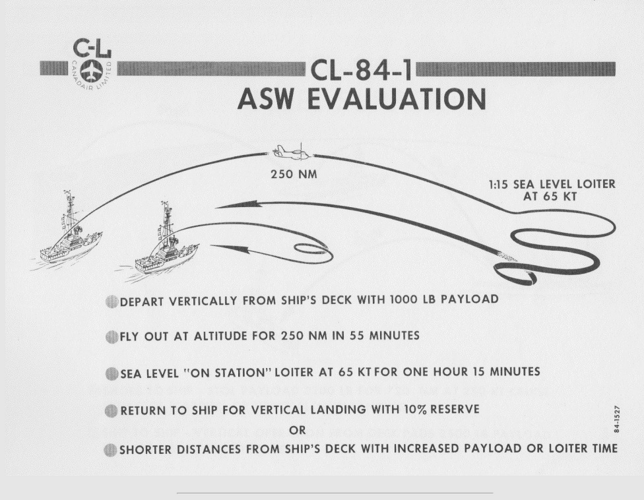By that time (Year 1954),they didn't have yet CL-84 ?!.
Quite right, that RCN ASW contest was about a decade earlier.
The concept of using sonar-equipped helicopters instead of a DDE screen was only 2 years past experimental installations in 1954 (the purpose-designed Sikorsky HSS-1
Seabat wouldn't enter USN service for another year). Canada was asking for ASW helicopters because the former Chief of Naval Staff, VAdm Harold TM Grant, had told the Cabinet Defence Committee in 1948 that the future RCN's main role within NATO would be ASW.
The 1954 requirement sprang out of a Naval Staff committee formed the previous year. Its conclusion was that helicopters held great promise in ASW hunter-killer roles but that available airframe types "were unsuited to the rigours of ASW at sea". The result was a recommendation for form an ASW squadron on six Piasecki
Retriever helicopters ... which was rejected. [1]
Instead, the RCN held out for a more capable helicopter. That came in 1955 in the form of the Sikorsky HO4S-3
Sea Horse fitted with US AN/AQS-4 dipping sonar. Doubtless, had the decision come a year later, the candidate would have been the USN's
Seabat. But the HO4S-3 did have the advantage of commonality with the in-service HO4S-2 rescue choppers. Beginning their active ASW role embarked aboard HMCS
Magnificent (CVL 21) in April 1956, the HO4S-3s had almost a decade of service in by the time that the prototype CL-84 had flown.
______________________________
[1] That may have been fortunately, a handful of HUP-3s were bought for use aboard the Arctic Patrol Vessel, HMCS
Labrador and they had their issues. One of these helicopters would eventually land-on - 662 operating off the flight deck of HMCS
Assiniboine in August 1963.






